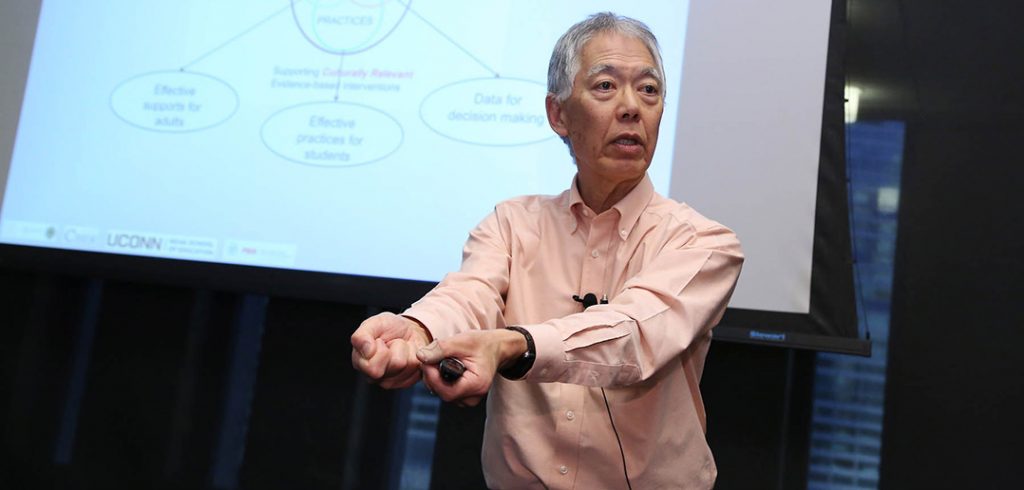Schools can be beacons of safety, stability, and inspiration if educators take proactive steps to address harassment and violence, a distinguished educator said on March 19 at Fordham.
In Now More Than Ever: Doubling Down on Prevention in Schools, a lecture sponsored by the Graduate School of Education, George Sugai, Ph.D., delved into Positive Behavioral Interventions and Supports (PBIS) as a way to head off problematic behaviors.
Sugai, the Carole J. Neag Chair in Special Education at the University of Connecticut, said that the PBIS approach, which is currently used by 26,000 schools worldwide, would help educators avoid a wait-and-see approach exemplified by arming teachers and “hardening” schools.
“We just can’t continue to react to the problems we’re experiencing out there, be they tragedies, or ongoing bullying or violence issues. We need to think about a prevention-based perspective,” he said.
“The practices and strategies aren’t that difficult, in fact, they’re quite simple, but what I’d like to suggest is that the systems behind those practices is where we need to invest.”
Proactive, not Reactive
The need to be proactive has never been more pressing, he said. A survey conducted last year found that 95 percent of students between 12 and 18 years old perceived their schools to be safer than their homes or their neighborhoods; another survey showed that bullying decreased between 2007 and 2015. But Sugai said that after 2016, those latter numbers are going up again.
“So post-2016 is a big area for research,” he said.
If a school has issues with violence, it’s tempting to think that stationing armed guards or arming teachers will solve the problem, he said. But that’s an example of a coercive cycle, similar to when a toddler learns they can get their parent to buy them ice cream by simply screaming long enough.
“There is a functional equivalent to that in our schools, in how we respond to kids who escalate. [It’s] not a good strategy. A better strategy is preventing that from happening in the first place.”
The PBIS system, he said, is a framework which organizes interventions based on outcome, data, systems and practices.
“If you’re building a bridge, if you’re having an operation, if you’re flying an airplane, we want all four of those things to be very clear,” he said.
“Many schools pick practices because you can get them on a handheld, not because they promise a certain kind of outcome. They pick it because of the bells and whistles, not [for]the best interventions.”
Three Tiers for Safe Schools
An ideal intervention should have a three-tiered continuum; 1) focus on doing something for everybody, 2) do a little extra for some; and 3) focus the most intense services on the kids who need extra help.
“If a kid can’t read, what do we do? We give him extra support to get it right, and then we might give him something more intensive. Same thing is true on the behavior side. You can’t just keep swatting over and over again and sending them home. You have . . . move onto something else.”
In a good system, ones where 95 percent of kids feel it’s a safe place, tier one is the choice, he said.
In addition, four elements are critical to establishing a positive school environment:: A name, a context, examples, and feedback. One PBIS school, for instance, chose for the name “Respect Elders, Respect Self, Respect Property.” It chose as places the hallways, cafeterias, assemblies, and busses. Students and staff then generated examples of respect in those places.
“If you do PBIS framework well, you have a good likelihood of reducing bullying, increasing academic achievement, and improving school climate. There’s some good data suggesting is a worthwhile investment.”


